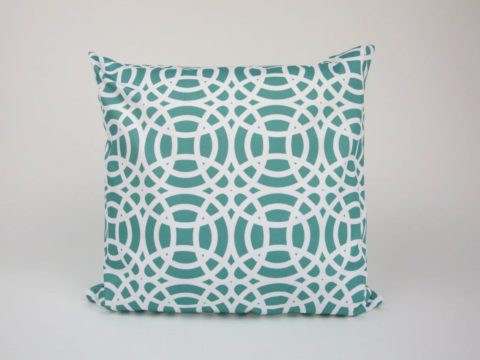Elizabeth I: Palaces, Prisons and Progresses
Elizabeth I never left England, and seldom travelled far from the south and east of the country, yet within those geographical limits, she regularly moved between her own palaces, and the houses of her courtiers, ensuring that she was widely visible to her people.
The numbers against the places correspond to those on the map here and at the end of this article.
Elizabeth was born on 7 September, 1533, at the royal manor of Greenwich (1). Her father had been born there, as had her half-sister, Mary. Greenwich was one of Henry’s favourite locations, and was also Elizabeth’s personal favourite, being the location at which she spent most time during her reign, other than the palace of Whitehall, which was the central place of government. Greenwich had been built by Elizabeth’s grandfather, Henry VII, around 1500 on the Thames, down-river from London, on the site of a fifteenth-century ‘pleasuance’ manor created for Humphrey, Duke of Gloucester. Greenwich was innovative in its design, being the first royal palace to be built and decorated so extensively in brick. Elizabeth’s preferred time for visiting Greenwich was during the summer, when her river-facing apartments (the king’s) could take advantage of the river breeze. Elizabeth made extensive use of the gardens at Greenwich. In 1589 a ‘great seat’ was made under her favourite mulberry tree; it had a brick base, seat covered in lead and four pillars to support a canopy. Most of Greenwich was demolished during the Commonwealth. In the 1690s, a hospital for seamen was built on the site and in the 1800s it became the Royal Naval College. Today, it is possible to see some remnants of the excavated palace walls, situated beneath the Painted Hall at the Old Royal Naval College.
It was the custom for kings’ children to have separate lodgings from the court, to minimise the likelihood of catching an infectious disease. Within weeks of her birth, Elizabeth had her own small court, which was often based at Hatfield (2), although she also spent time at Hertford Castle, and Eltham. Hatfield, some 40 miles north of London, was originally the property of the bishops of Ely, and it was there that Elizabeth’s great-great-uncle, Jasper Tudor, was born in around 1431. In about 1480, the then bishop, John Morton, began a new palace, the red-brick construction which is now known as Hatfield Old Palace, of which some remnants survive and can be visited. During the reigns of Edward VI and Mary I, Elizabeth spent considerable periods at Hatfield, and it was there that she awaited news of her accession in the autumn of 1558. According to legend, she was sitting under a huge oak tree in the grounds when news was brought to her of Mary’s death. She responded with the words ‘this is the Lord’s doing, and marvellous in our eyes.’ She remained there for several days, to take oaths of fealty from her new councillors and advisers, chief amongst whom were Robert Dudley and William Cecil. Hatfield was later exchanged by James VI & I for Theobalds.
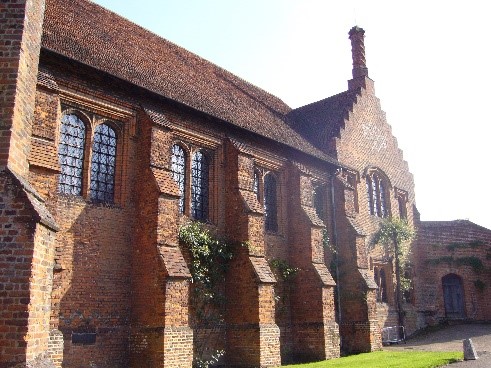
Another location where Elizabeth spent part of her youth, which had a profound affect on her, was Chelsea Manor (3). During the mediaeval period, Chelsea was held by various families as tenants of Westminster Abbey. In 1485, it came into the possession of Sir Reginald Bray, one of Henry VII’s inner circle. On his death in 1503, his wife, Katherine, held it in dower, but after her death, it became the subject of a dispute between the son of Reginald’s brother, Edmund Bray, and the daughter of his half-brother, Margaret Bray, Lady Sandys. Eventually, Lady Sandys, and her husband, Sir William, were granted possession. In 1536, Sir William sold the property to Henry VIII, who also acquire Westminster Abbey’s remaining interest in it, making it entirely Crown property. Henry granted it to Katherine Parr in jointure on their marriage, and it was here that she resided during her short widowhood and subsequent marriage to Sir Thomas Seymour. Elizabeth, being on only 13 at the time of her father’s death, went to live with Katherine. Before long, she became embroiled in scandal, when it seemed that Seymour was making what could be construed as sexual advances towards her (more on that here). After treating the matter lightly initially, Katherine felt obliged in the early summer of 1548 to send Elizabeth away, whilst she herself retired to Sudeley Castle. Elizabeth went to the Dennys at Cheshunt, before taking up residence at Hatfield, where she spent much of the remainder of Edward VI’s reign.
In 1553, when Mary triumphed over the attempt to enthrone Lady Jane Grey, she entered London from the east. She summoned Elizabeth to meet her, and the two met at Wanstead House (4). This had been a royal hunting lodge, frequently used by Henry VIII, but granted in 1549 by Edward VI to Richard, Lord Rich (he who had perjured himself to convict Sir Thomas More). Whilst Elizabeth had made no move to support Mary against Jane, this appeared to be forgotten, and Mary embraced her half-sister, and took her by the hand, to create a show of unity in the family. Elizabeth later granted Wanstead to the Earl of Leicester, and it was there that he secretly married his second wife, Elizabeth’s cousin, Lettice Knollys, Dowager-countess of Essex.
For the first few months of Mary’s reign, Elizabeth remained at her side, but then withdrew to another of her houses, Ashridge, in Hertfordshire (5). Ashridge had initially been a college of the religious order of Bonhommes, established by Edmund, Earl of Cornwall (nephew of Henry III). The college had a relic of the Precious Blood of Jesus, brought by Edmund’s father from the Holy Land, and divided between Ashridge and the more famous Abbey of Hailes. In 1535, the college was surrendered to Henry VIII, with the last rector being granted a pension, although the brothers were probably unwilling. One of the other brothers was reported to Cromwell for hasty words against Henry’s religious changes, but Sir John Russell, later Earl of Bedford, pleaded for him. The manor thus came to the Crown.
Whilst Elizabeth was at Ashridge in the winter of 1553-4, Sir Thomas Wyatt and several other Protestant gentlemen, including Sir James Croft, who was later to be greatly favoured by Elizabeth, began fomenting a rebellion, ostensibly against Mary’s marriage plans (more here) but possibly with a view to enthroning Elizabeth herself. She received at least one message from the rebels, but returned a bland answer. Soon, the queen’s officers were at the door, suggesting that she come to London for her own safety. Elizabeth refused the invitation, claiming illness and took to her bed. Either coincidentally, or reacting badly to stress, she was indeed sick, and remained bedridden for some time. Once the rebellion was defeated, she was summoned again, and this time, there was no refusing. She left Ashridge in a litter, and was transported to Whitehall in easy stages. At the start of Elizabeth’s own reign, the manor was reported as in poor repair. It was leased to various people, and then sold, coming eventually into the possession of Thomas Egerton, later Lord Ellesmere and Lord Chancellor. His descendants remodelled the house extensively in 1808, under the guidance of James Wyatt and Jeffrey Wyatville. The family sold the property in 1929. It became hospital during World War II, and is now a wedding and conference venue.
When Elizabeth arrived in London, she was kept for three weeks out of sight of the queen, whilst the allegations of involvement in Wyatt’s Rebellion were investigated. There was considered to be enough evidence to send her to the Tower of London (6). Elizabeth, not surprisingly, was terrified, and initially refused to enter the Tower precincts. It was only when her attention was drawn to the fact that, so long as she resisted entering, all of the guard had to stay out in the rain, that she submitted. She was held in the Tower until May 1554, being regularly questioned by the Council. As a prisoner of rank, she was housed in comfortable lodgings, and it appears that whilst there, she had some contact with her old friend, Lord Robert Dudley, who had been incarcerated along with his brothers, for their part in the Lady Jane Grey affair, the previous summer. Eventually, Mary not believing there was sufficient evidence to condemn her sister, Elizabeth was discharged to the care of Sir Henry Bedingfield, and taken to Woodstock (7) on 19 May 1554. This was the eighteenth anniversary of the execution of her mother, Anne Boleyn, but whether that was a coincidence or a deliberate statement by Mary is unknown. The latter seems possible, as Bedingfield’s father, Sir Edmund, had been Katharine of Aragon’s gaoler at Kimbolton.
During the mediaeval period, Woodstock was one of the most frequently used royal manors, covering a fairly extensive territory north of Oxford. According to legend, it was at Woodstock that Henry II housed his mistress, ‘Fair Rosamund’ de Clifford, whom his queen, Eleanor of Aquitaine, tracked down by following a ball of yarn she had secretly attached to the king’s spurs. Whilst the legend has her offering Rosamund the choice of a dagger or a cup of poison, the more prosaic reality is that Rosamund flourished until she retired to a convent in Essex. The manor was granted in jointure to Queen Isabella of France on her marriage to Edward II, but confiscated in 1324. It was held for a period by Queen Elizabeth Woodville, but not her successor consorts. Henry VIII used it frequently, and retired there in 1518 with Katharine of Aragon to escape an outbreak of plague. The property continued to be used by the Tudor monarchs, including Elizabeth, and was later assigned to James VI & I’s sons, Henry, Prince of Wales, and Charles, Prince of Wales (later Charles I). In 1704, it was granted to John Churchill, Duke of Marlborough, for an annual fee of the presentation of a flag to the monarch at Windsor Castle on the anniversary of Marlborough’s victory at Blenheim. The old royal manor was replaced by the sumptuous (and in the view of the Duchess of Marlborough, expensive and hideous) Blenheim Palace, which continues to attract thousands of visitors as the birth place of Sir Winston Churchill.
Elizabeth found Bedingfield to be a most incorruptible gaoler, but she appreciated that he was acting from his duty, and did not hold her incarceration against him after her succession, although his conservative religion prevented him from becoming one of her intimate advisors.
Bedingfield was eventually commanded to take Elizabeth to Hampton Court Palace (8). This was, of course, a palace well-known to her. She had attended the marriage of her father to Katherine Parr there, in the Queen’s Closet, and frequently visited during Henry’s and Edward’s reigns. Now, she was to be brought before her new brother-in-law, Philip II of Spain, and, potentially, to attend the birth of Mary’s expected child. In the event, there was no child, and Elizabeth, after much pleading, was permitted to return to Hatfield. She had made sufficient impression on Philip during the visit for him to propose marriage to her on Mary’s death, an offer she toyed with until he married Elisabeth of France.
During the early days of her reign, Elizabeth was often at Hampton Court. She had a suite of rooms fitted up for Dr John Dee, the alchemist and philosopher, whom she frequently consulted. It was at Hampton Court that she signed a treaty with the Huguenot party in France, which was intended to give England territory in France at Le Havre, in return for military aid to the Prince of Condé. Unsurprisingly, matters did not work out as planned. Another unhappy event at Hampton Court was Elizabeth’s contraction of smallpox there in 1562. This incident cooled her enthusiasm for the palace for some five years, but as time progressed, she visited more often, particularly enjoying the gardens. Under the early Stuarts, the Tudor palace remained little changed, but William III and Mary II pulled down and replaced part of it. Appalled at the spiralling costs, Queen Anne abandoned work. The Hanoverians did not use the palace much, and by the accession of Queen Victoria, it was in considerable dilapidation. Victoria ordered that it be opened to the public, and it has remained one of the most visited palaces in Britain ever since, currently managed by Historic Royal Palaces.
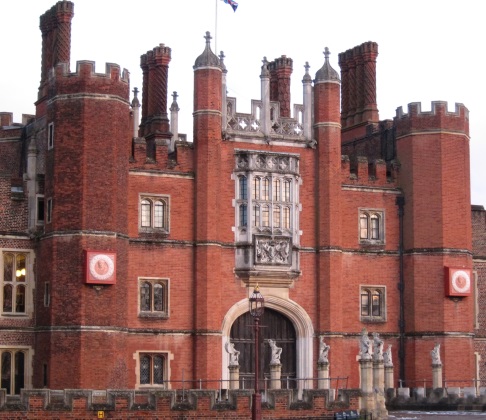
As well as Whitehall, which was her main palace, Greenwich, Hampton Court and other well-known locations, Elizabeth had other properties, often used for recreation. Amongst these was Nonsuch (9). This palace had been built ab initio by Henry VIII, begun in 1538, and probably structurally complete by the end of 1541. It was a traditional double courtyard house, using many recycled materials from the suppressed Merton Abbey, but was designed and decorated in the most up-to-date Renaissance style, probably with designs for the external pargetted stucco work from Nicolo Bellin of Modena. The stucco work was not merely decorative, it featured three-quarter-size models of notable figures from classical antiquity, as well as representations of virtues and vices. In the centre of the south range were figures of Henry VIII and Prince Edward. Elizabeth used Nonsuch regularly, often to meet foreign ambassadors, but also for hunting. Sixty years or so after her death, the by-then dilapidated palace was granted to Barbara Palmer, Duchess of Cleveland, the chief mistress of Charles II. She ripped it down and sold the materials to pay her gambling debts. All that remains is a single banqueting house, near Cheam in Surrey.
Whilst Elizabeth enjoyed herself at her own houses, one of the most notable aspects of her style of government, was her frequent progresses around the south and midlands of England. These progresses had several purposes – to show the queen to her subjects, to increase loyalty by favouring courtiers with her presence, and to save the queen herself expense, by transferring the cost of the court to private individuals. There was also the more prosaic need for each palace to be thoroughly cleaned and aired after the court had been in residence. Typically, the queen would travel during the summer months. She went as far west as Bristol, as far east as Norwich and as far north as Staffordshire and Leicestershire. The most famous of her visits was to Kenilworth in 1575 (10). Granted by Elizabeth to Robert Dudley, Earl of Leicester, Kenilworth had been one of the most important estates in the duchy of Lancaster. More on the revels that Leicester organised for that trip here.
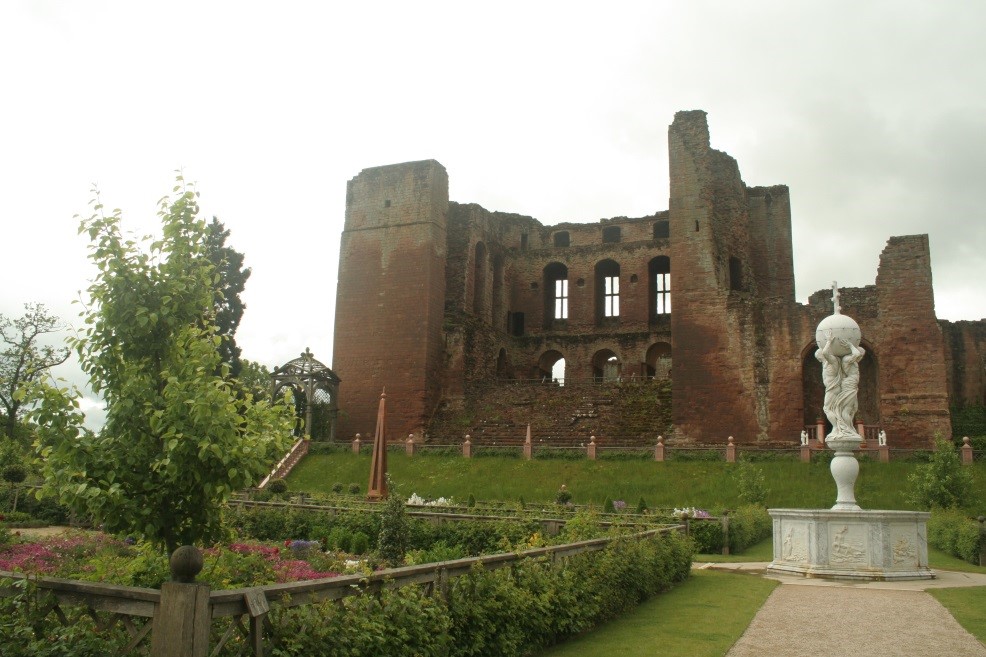
The manor of Osterley (11) in Middlesex was another courtier’s house often visited by Elizabeth. The property, originally a farmhouse, was bought in 1562, by Sir Thomas Gresham (who was one of the founders of the Royal Exchange). He had built a house ‘beseeming a prince’ there, by around 1577, where he frequently entertained the queen. She continued to visit after his death, presumably for personal affection for his widow, who had no political role. Constructed around a central courtyard, the Tudor house was extensively remodelled in the eighteenth century by the architect Robert Adam for Sir Francis Child and its neo-classical interiors are some of the most complete examples of Adam’s work surviving today. Osterley is now in the care of the National Trust and can be visited.
The courtier’s house that Elizabeth made most use of, treating it almost as a royal palace, was Theobalds (12), which was constructed by William Cecil, Lord Burghley.
As noted above, Elizabeth gave apartments to Dr Dee at Hampton Court, but she also visited him in a property at Mortlake (13). Mortlake is close to the royal park at Richmond and was originally one of the properties of the archbishop of Canterbury. Archbishop Cranmer exchanged it for other lands with Henry VIII, who first gave it to Thomas Cromwell, but then exchanged took it back to assign to Queen Anne of Cleves in jointure. In 1549, it appears that William Cecil had petitioned to be granted property at Wimbledon, but received the answer that he might have to be satisfied with Mortlake. It is uncertain when it came into the possession of Dr Dee – whether from Cecil, or direct from the Crown, however he lived there for many years, and was probably buried in the church built there in 1543, of which only the chancel now survives. Dee’s house was extended and altered over the years, becoming part of the Royal Tapestry Works, instituted by James VI & I, and later, a girls’ school. What remained was pulled down in the early twentieth century.
Near to Mortlake was Richmond Palace (14) – which could be considered as at the heart of the Tudor dynasty. Richmond was built around the turn of the sixteenth century after a fire destroyed the previous palace of Sheen. It was given the name of Richmond in commemoration of the title of earl of Richmond, inherited by Henry VII from his father, Edmund Tudor, and the title which his mother, Margaret Beaufort, like to use until her death, despite further marriages. Henry’s palace was considered a marvel at the time of construction, introducing European styles, and intended to show his dynasty as in the forefront of European power and taste. It was the location of wedding celebrations for Prince Arthur and Katharine of Aragon, and the location of the proxy marriage of Princess Margaret to James IV of Scotland.
Henry VIII and Katharine of Aragon used it during the first years of Henry’s reign, but rarely thereafter – perhaps it was tainted by the memory of the death of their son Henry, Duke of Cornwall, in 1511. It was granted to Anne of Cleves as part of her annulment settlement, but was reclaimed by Edward VI’s government under the Duke of Somerset, in 1548.
Elizabeth visited the palace frequently, and often entertained there – it was the setting for the prolonged courtship visit by the Duke of Anjou in 1579. It was also the palace to which she withdrew in early 1603, as her health went into decline, and the site of her death on 24th March, 1603. The palace, like so many others, was pulled down during the Commonwealth, with only a fragment remaining. The royal park continues in use, and is one of the most popular parts of south-west London today for recreation – cyclists and walkers sharing the space with the royal deer herd.
After her demise, Elizabeth’s body was taken to Whitehall to lie in state, before her burial at Westminster Abbey (15), in the chapel founded by her grandfather, Henry VII, where she was laid to rest in the tomb of her sister, Mary I. Some years later, James VI & I raised a splendid monument to her, although it was in an inferior location and cheaper than the monument raised to his mother, Mary, Queen of Scots.
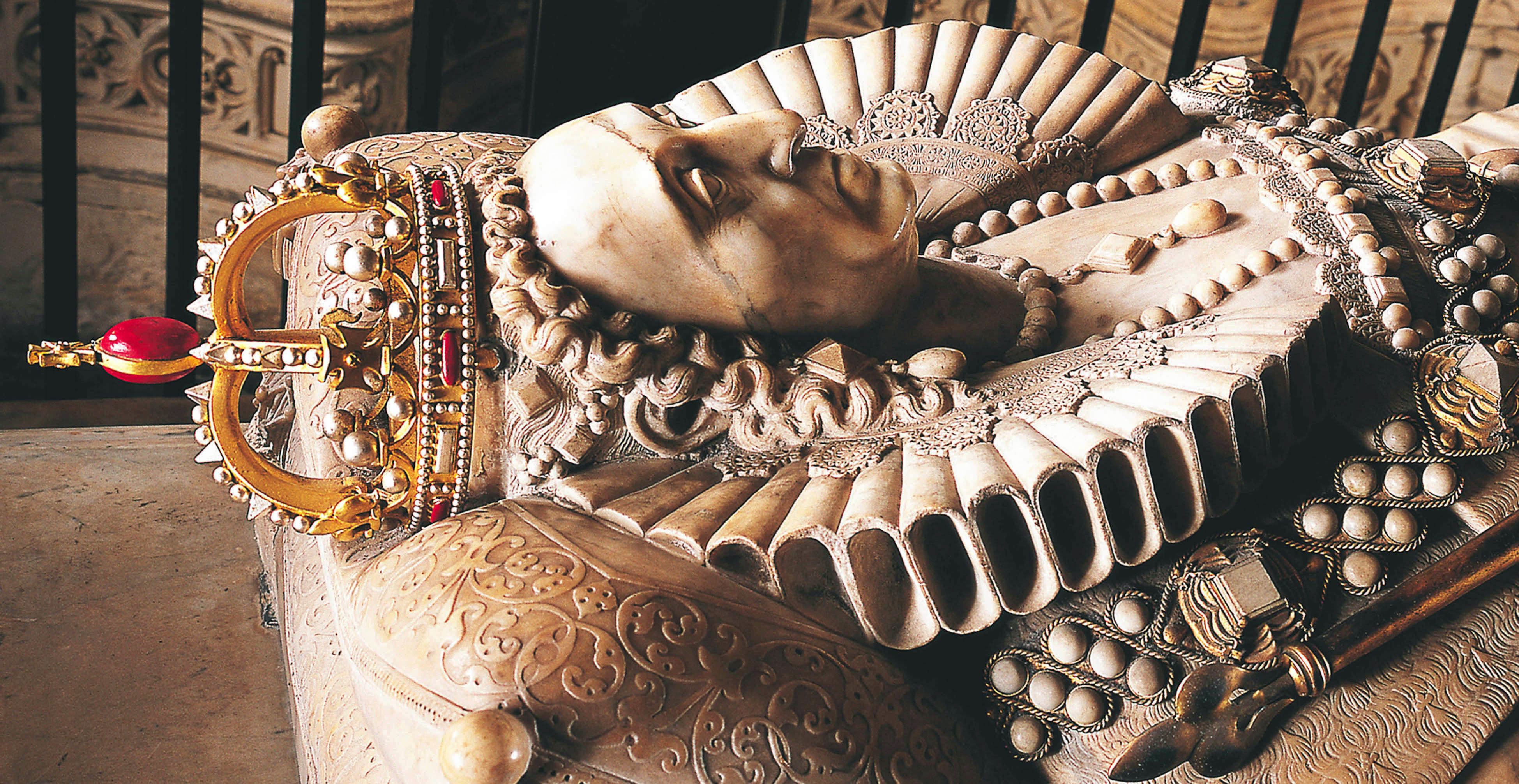
The map below shows the locations of the places associated with Elizabeth I discussed in this article.
